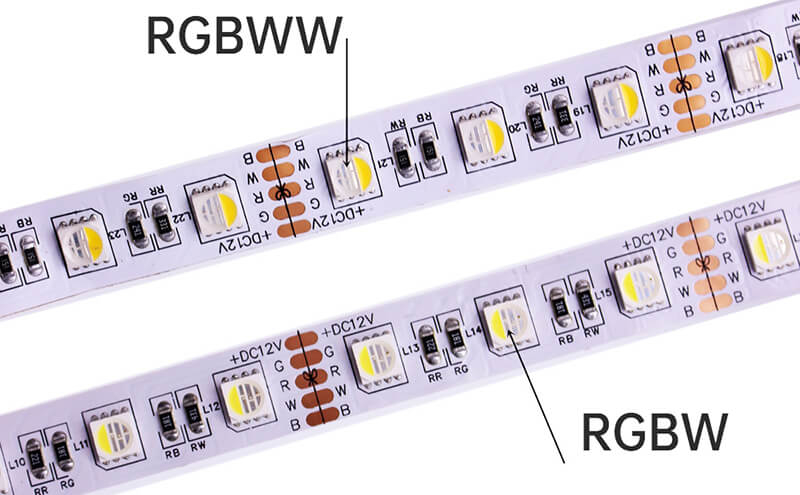High Quality OEM/ODM LED Strip Manufacturer
High Quality OEM/ODM LED Strip Manufacturer
September 2, 2024 476
LED strips are popular for their versatility, energy efficiency, and ease of installation, making them a go-to choice for both residential and commercial lighting solutions. However, if you've ever purchased or installed an LED strip, you might have noticed various letters and numbers printed on the strip. Understanding these markings is crucial, as they provide important information about the strip’s specifications, performance, and best use cases. In this comprehensive guide, we’ll break down what these letters mean and how they can influence your choice of LED strips.

Before diving into the specific letters and their meanings, it’s essential to understand the basic components of an LED strip. An LED strip typically consists of the following:
Now, let’s explore the meaning of the letters you’ll often see on these strips.
| Letter Code | Meaning & Explanation | Examples | Notes |
|---|---|---|---|
| V | Voltage (Volts) | 12V, 24V | Combined with numbers to indicate operating voltage |
| RGB | Red-Green-Blue color mixing | RGB-5050 | Programmable color combinations |
| W/WW/CW | White variants: - W: White (default cool white) - WW: Warm White (2700K-3500K) - CW: Cool White (5000K-6500K) |
24V-WW, SMD2835-CW | Color temperature specifications |
| SMD | Surface-Mounted Device | SMD5050 | Followed by size codes like 5050 (5.0×5.0mm) or 2835 (2.8×3.5mm) |
| IP | Ingress Protection rating | IP65, IP20 | Dust/water resistance levels (IP65 = water-resistant) |
| D/A | Control type: - D: Digital signal - A: Analog signal |
WS2812D, LED-A-12V | D allows programming; A uses voltage dimming |
| F/C | Physical features: - F: Flexible - C: Cuttable |
FPCB-RGB-F, LED-C-24V | F for bendable strips; C indicates cut marks |
| LEDs/m | LEDs per meter | 60LEDs/m | Higher density = brighter light & higher power |
| IC | Integrated Circuit chip | WS2811-IC | Built-in control chip versions (e.g., WS2812B's "B" = chip revision) |
| ST/C/B | Circuit design: - ST: Strip type - C: Series groups - B: Parallel groups |
YZS-ST-3C5B | Example: 3 series groups × 5 parallel paths |
When selecting an LED strip, understanding these letters and their associated specifications will help you make an informed decision. Here’s a step-by-step guide:
Understanding the letters and numbers on LED strips is crucial for choosing the right product for your needs. By paying attention to these markings, you can ensure that you select an LED strip that is compatible with your installation environment, provides the desired lighting effect, and operates efficiently. Whether you’re illuminating a cozy living room, adding ambiance to a garden, or highlighting a display, the right LED strip can make all the difference.
If you need assistance from professionals, feel free to contact us. We are here to provide you with expert help and support for all your needs. Don't hesitate to reach out to our team for personalized assistance and solutions. We look forward to serving you.
Our sales will reply to you within 2 hours.
